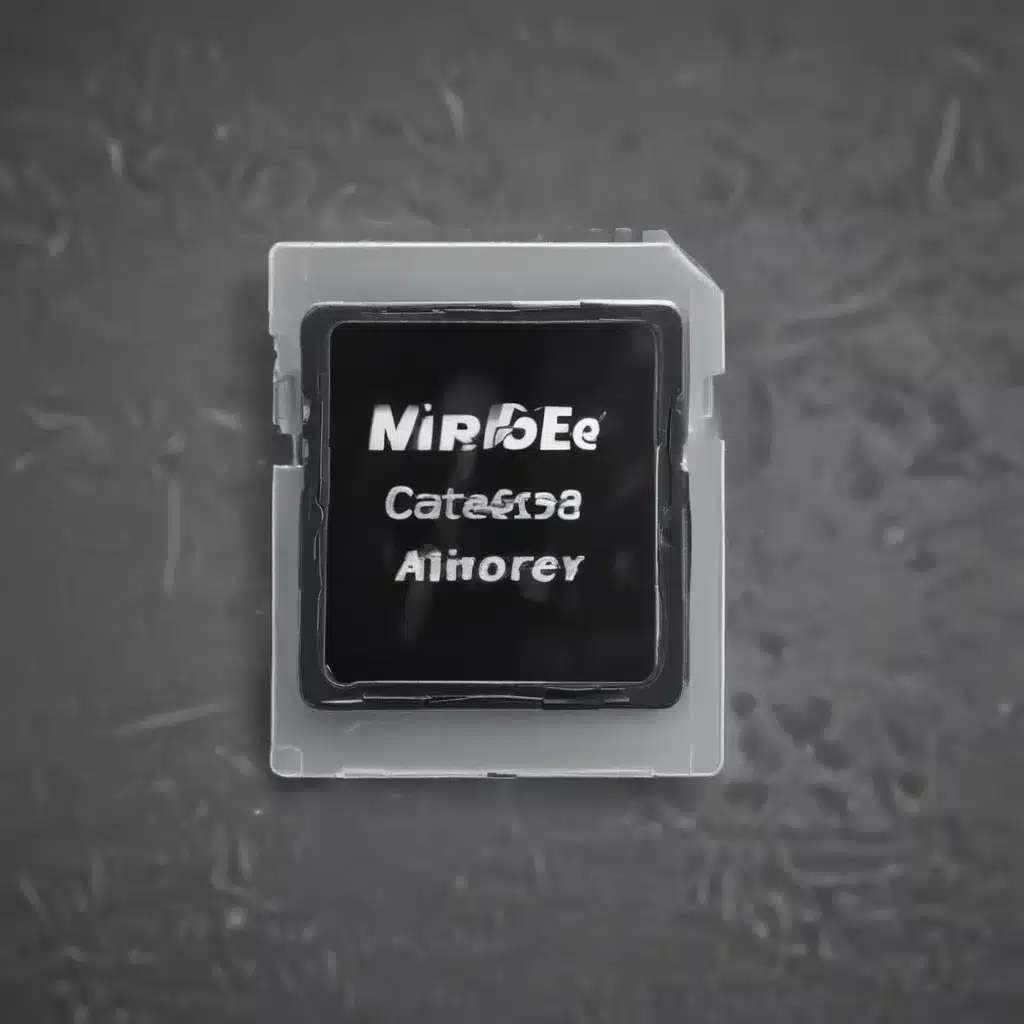The Dreaded Moment: A Memory Card Disaster
It was a sunny day, and I was out with my camera, snapping away, capturing moments that I knew would become cherished memories. Little did I know, my world was about to come crashing down. As I was reviewing my shots, I accidentally hit the “Format” button on my camera’s menu, wiping my memory card clean. My heart sank, and panic set in – all those irreplaceable moments, gone in an instant.
If you’ve ever found yourself in a similar situation, you know the feeling all too well. That gut-wrenching realization that your precious memories have vanished, leaving you desperate to find a way to retrieve them. Well, my fellow photography enthusiasts, I’m here to tell you that all is not lost. In this comprehensive guide, I’ll walk you through the steps to recover your wiped memory card and salvage those priceless moments.
Understanding Memory Card Wiping
Before we dive into the recovery process, it’s essential to understand what happens when you wipe a memory card. When you format or delete files from a memory card, the data doesn’t actually disappear immediately. Instead, the card’s file system marks the space as available for new data, essentially hiding the old files from view [1].
This means that if you act quickly, there’s a good chance you can recover those lost images and videos. However, the longer you wait, the more likely it is that new data will be written over the old, making recovery increasingly difficult.
Tools for Memory Card Recovery
Fortunately, there are a variety of software tools available to help you recover your lost data. Some popular options include:
These tools work by scanning the memory card and searching for remnants of the deleted files, allowing you to preview and recover the ones you need. The process can be a bit technical, but with the right guidance, you can get your memories back.
Recovering Deleted Files
Now, let’s dive into the recovery process. Here’s a step-by-step guide to help you get started:
-
Stop Using the Memory Card: As soon as you realize your memory card has been wiped, stop using it immediately. Avoid taking any new photos or videos, as this increases the risk of overwriting the deleted data.
-
Choose a Recovery Tool: Decide which recovery software you want to use. Each tool has its own set of features and capabilities, so it’s worth doing a bit of research to find the one that best fits your needs.
-
Scan the Memory Card: Insert the wiped memory card into your computer and launch the recovery software. Initiate a full scan of the card, which may take some time depending on the card’s capacity.
-
Preview the Recoverable Files: Once the scan is complete, the software will present you with a list of the files it was able to detect. Review the list and select the ones you want to recover.
-
Recover the Files: With the selected files highlighted, click the “Recover” or “Save” button to extract them to a safe location on your computer. Avoid saving them back to the original memory card.
-
Verify the Recovered Files: After the recovery process is complete, double-check the recovered files to ensure they are intact and can be opened without any issues.
Remember, the sooner you can start the recovery process, the better your chances of success. If you encounter any difficulties or have questions, don’t hesitate to consult the software’s documentation or reach out to customer support.
Preventing Future Memory Card Disasters
Now that you’ve successfully recovered your lost memories, it’s time to focus on preventing such disasters in the future. Here are a few tips to help you safeguard your precious data:
-
Regularly Back Up Your Photos and Videos: Develop a habit of regularly backing up your memory card’s contents to a secure location, such as an external hard drive or cloud storage service. This will ensure that even if your card is wiped, you’ll have a copy of your photos and videos.
-
Be Cautious with Memory Card Formatting: Avoid formatting your memory card unless it’s absolutely necessary. If you do need to format, be sure to double-check that you’re selecting the right card and that you don’t have any important data that needs to be backed up first.
-
Consider Using Dual Card Slots: If your camera has dual card slots, take advantage of them by using one card for your primary storage and the other as a backup. This way, if one card fails, you’ll still have your images and videos stored on the other.
-
Invest in High-Quality Memory Cards: Cheap or low-quality memory cards are more prone to failures and data loss. Spend a bit more on reputable brands to ensure your data is well-protected.
By following these simple precautions, you can minimize the risk of experiencing another devastating memory card wipe and keep your cherished moments safe for years to come.
Remember, no matter how dire the situation may seem, there’s always hope when it comes to recovering your lost data. With the right tools and a bit of persistence, you can bring those precious memories back to life. Happy shooting, and may your memory cards always be safe and sound!
[1] https://www.youtube.com/watch?v=1ureKM-zXMg
[2] https://community.gopro.com/s/question/0D53b00008BtdFVCAZ/go-pro-completely-formatted-my-sd-card?language=en_US
[3] https://www.youtube.com/watch?v=reUE3HL7D_Y
[4] https://www.reddit.com/r/AnimalCrossing/comments/11sj381/today_i_made_the_mistake_ive_always_dreaded/
[5] https://www.youtube.com/watch?v=XYG3fk_rZsc
[6] https://www.reddit.com/r/AskPhotography/comments/mj3i7l/how_do_i_recover_recently_deleted_pictures_from/
[7] https://www.youtube.com/watch?v=QjODWwfqhyQ
[8] https://www.quora.com/How-do-I-retrieve-deleted-memories













